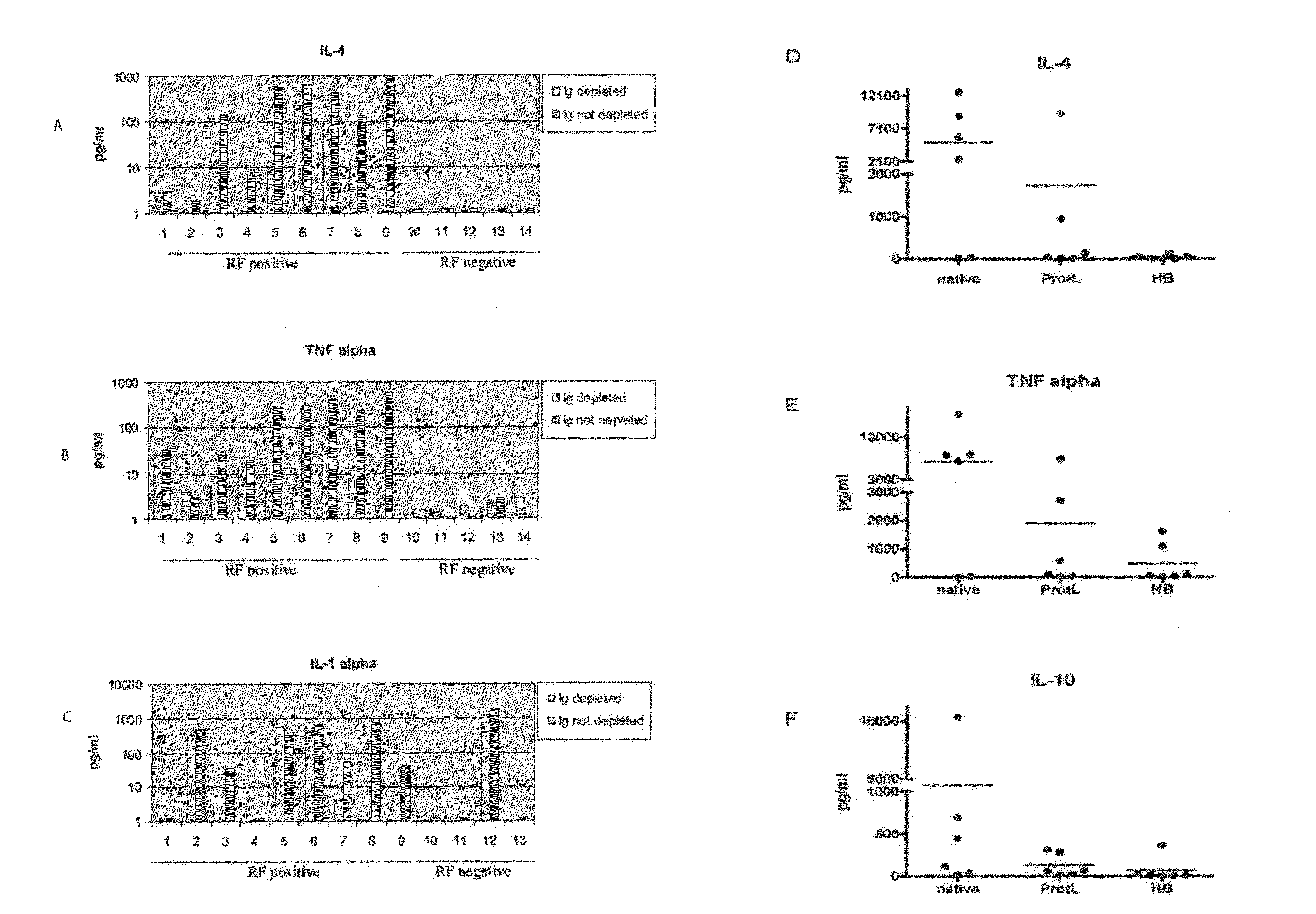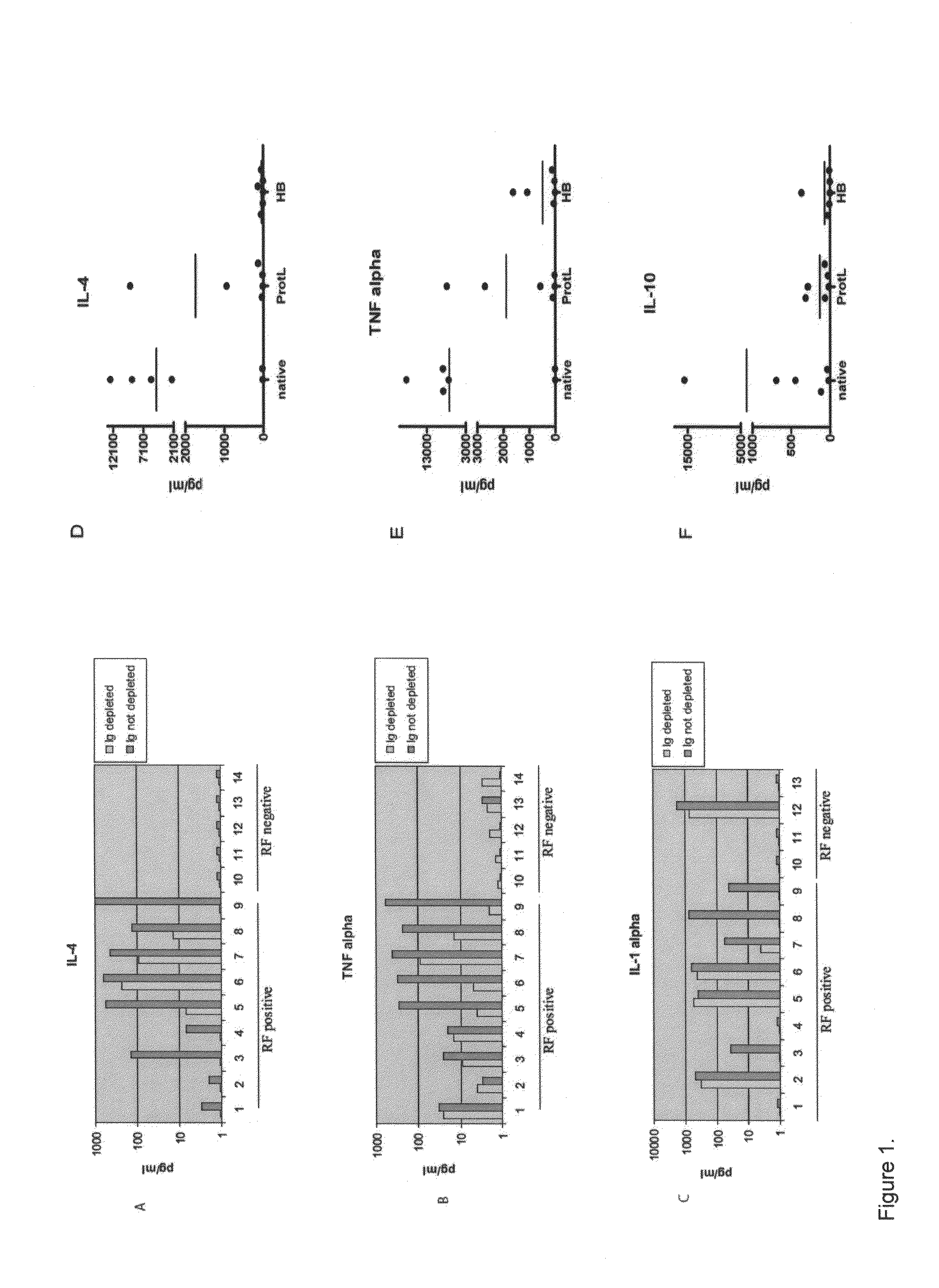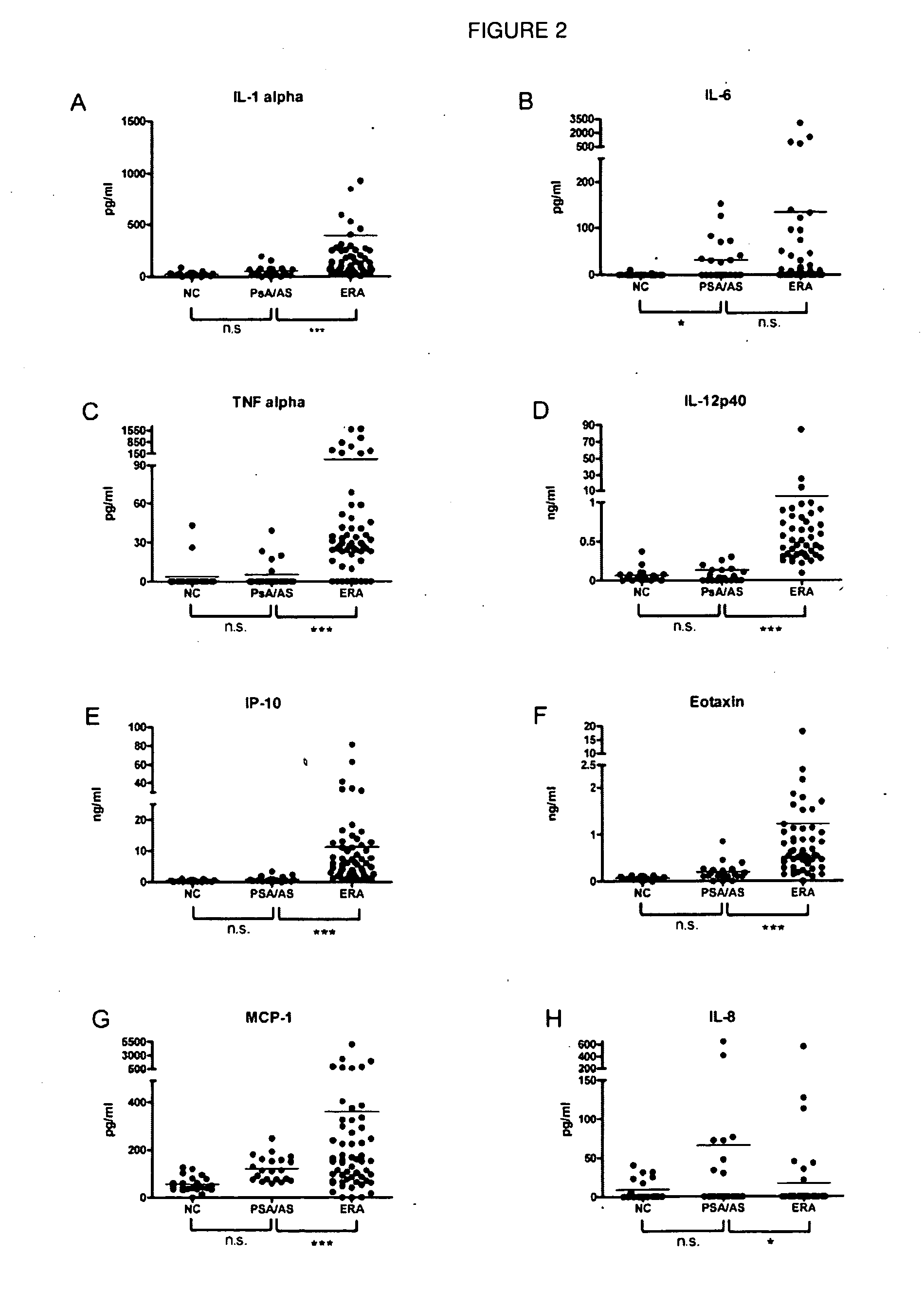Biomarkers for the diagnosis of autoimmune disease
a biomarker and autoimmune disease technology, applied in the field of biomarkers for the diagnosis of autoimmune diseases, can solve the problems of insufficient activation, t-cell responses to self-antigens can inflict tissue damage, and chronic inflammation injury to tissues, and achieve the effect of improving car
- Summary
- Abstract
- Description
- Claims
- Application Information
AI Technical Summary
Benefits of technology
Problems solved by technology
Method used
Image
Examples
example 1
Development and Optimization of Methods for Cytokine Proofing in RA
Cytokine Profiling
[0140]Optimized methods were developed for profiling cytokines in human sera using a bead-array system (Luminex®). It has developed and validated methods to use HeteroBlock® (Omega Biologicals) to minimize non-specific bridging of capture and detection antibodies by rheumatoid factor and other heterophilic antibodies in bead-array systems (FIG. 1). Using optimized methods, cytokine and chemokine analysis on 58 randomly selected serum samples derived from the ARAMIS inception cohort, as well as a cohort of RA, other inflammatory arthritis (ankylosing spondylitis and psoriatic arthritis), and healthy control samples from the Stanford Arthritis Center (FIGS. 2 and 3). Cytokine profiling demonstrated broad elevations of blood cytokines in approximately 25% of RA patients (FIGS. 2 and 3). Data were analyzed using Kruskal-Wallis tests with Dunn's adjustment for multiple comparisons, and elevated levels of...
example 2
[0142]Studies were performed to determine what biomarkers are present in the pre-clinical period of disease in subjects that subsequently developed RA. These studies were accomplished using a U.S. military cohort in which 83 individuals who developed RA and had serial samples prior to the development of disease stored in the Department of Defense Serum Repository (DoDSR) were identified. De-identified demographic and relevant clinical data were abstracted from the chart, and serum stored in the DoDSR was recovered and sent to Denver for analysis. Demographic data on these 83 individuals with RA is presented in Table 3.
TABLE 3Demographic and clinical characteristics of cases with rheumatoidarthritis and serum samples available.Cases (N = 83)Age at diagnosis, Mean (std)39.9 (10.0) Male, N (%)49 (59%)Race, N (%)White57 (69%)Black21 (25%)Other5 (6%)Erosions, N (%)Present42 (51%)Absent34 (41%)Unclassified7 (8%)RF positivity at or after diagnosis*Sero-positive67 (81%)Sero-negative13 (16...
example 3
Pre-Clinical Autoantibodies, Cytokines / Chemokines, and C-Reactive Protein as Predictors of RA Severity
[0163]In this series of experiments, pre-clinical positivity for autoantibodies RF and anti-CCP, and elevations of cytokines / chemokines and CRP were evaluated for their ability to predict RA severity as measured by the presence of erosive disease.
[0164]In the first experiment, the RA military cohort was used to determine if RF or anti-CCP positivity predicted erosive RA. 51 subjects were positive for anti-CCP during the pre-clinical period of RA development. Pre-clinical anti-CCP positivity was strongly associated with the development of erosive RA (Adjusted odds ratio 11.3; 95% CI 2.3, 55.8; p=0.003). Pre-clinical RF positivity was not associated with increased risk for erosive disease. After controlling for anti-CCP positivity in regression analysis, no pre-clinical elevation of individual or combinations of cytokines / chemokines or CRP was associated with increased risk for erosiv...
PUM
 Login to View More
Login to View More Abstract
Description
Claims
Application Information
 Login to View More
Login to View More - R&D
- Intellectual Property
- Life Sciences
- Materials
- Tech Scout
- Unparalleled Data Quality
- Higher Quality Content
- 60% Fewer Hallucinations
Browse by: Latest US Patents, China's latest patents, Technical Efficacy Thesaurus, Application Domain, Technology Topic, Popular Technical Reports.
© 2025 PatSnap. All rights reserved.Legal|Privacy policy|Modern Slavery Act Transparency Statement|Sitemap|About US| Contact US: help@patsnap.com



